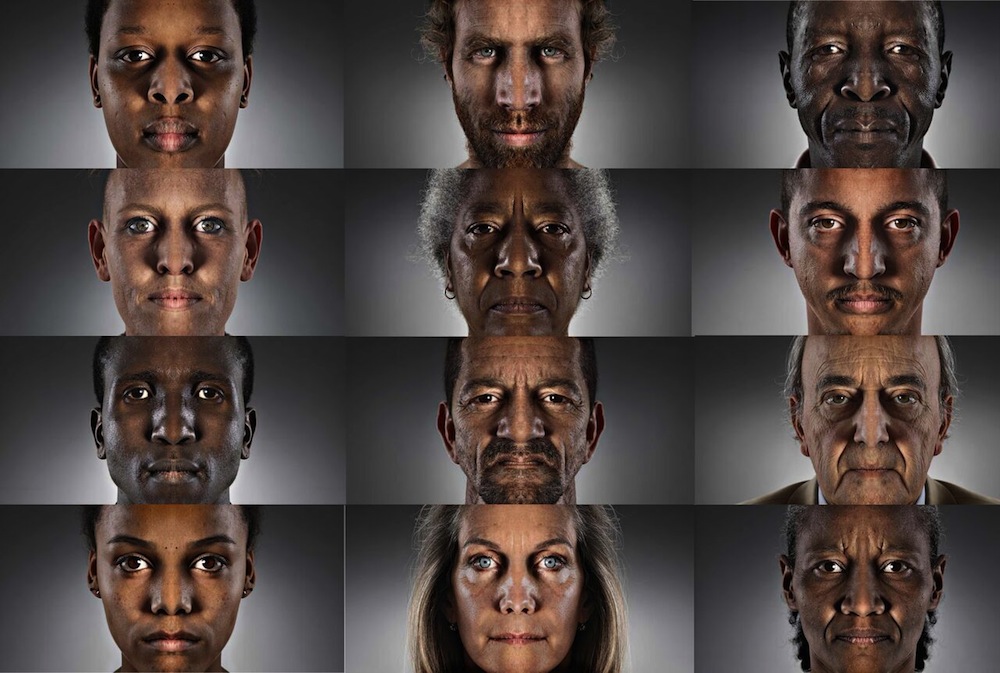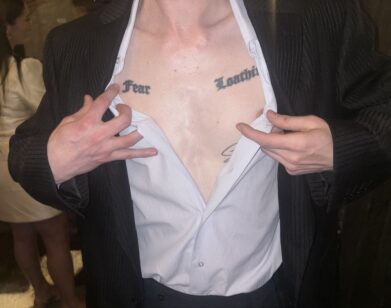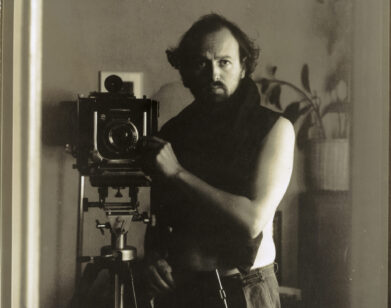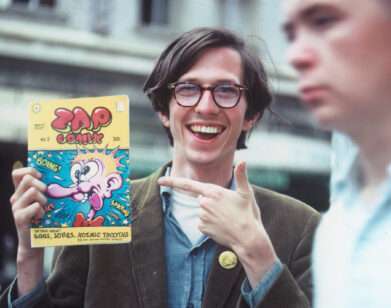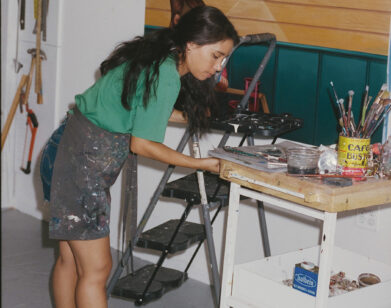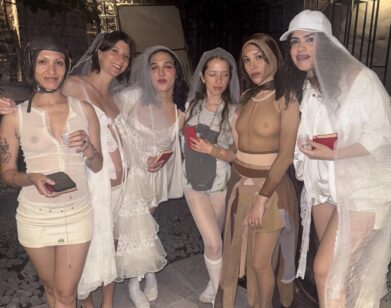Gabrielle Goliath’s Gunshot
In 2012, after learning that every six hours a woman in South Africa is killed by a current or former intimate partner, artist Gabrielle Goliath created Roulette, a simple participatory installation that takes the form of a dare. A pair of headphones dangle in front of the participant, and one is invited to put them on, despite the welcome mat beneath them that reads, “DISCLAIMER: LISTENING IN MAY RESULT IN SEVERE RINGING OF THE EARS OR EVEN PERMANENT AURAL DAMAGE.” Every six hours the otherwise static silence of the headphones is pierced with the sharp sound of a point blank recording of gunshot: POP. The gesture brings to life the violent reality women face in their daily lives in South Africa.
“Roulette very much takes its form from a statistic that was accurate at the time of the making of the work,” explains Goliath. “Statistics themselves are contentious and debatable. But it works, currently, with the statistic of femicide and that is a woman is shot and murdered every six hours in South Africa. The source that I cited at that time said that South Africa had the highest rate of femicide in the world.”
Goliath, who uses her art to bring visibility to South Africa’s rape culture and violence against women, asks herself a question: “How is one able to reclaim a measure of agency for these women that have died?” That sentiment carries through Goliath’s Faces of People who may or may not be Victims or Perpetrators of Domestic Violence, a 2014 series of 12 large-scale portraits of “everyday South Africans” who are victims and perpetrators of domestic violence. She sees Roulette and Faces as “commemorative gestures that seek to remember and honor.” Both are currently on view in “In Context: Where We Are,” a group show of African artists working with notions of home at Goodman Gallery in Cape Town, South Africa.
Recently, before the artist took the stage at the “Black Portraiture[s] III: Reinventions: Strains of Histories and Culture” conference at Turbine Hall in downtown Johannesburg—to present her new performance-based work titled Elegy—we spoke with her about her work and the art of remembrance.
ANTWAUN SARGENT: What about that statistic encouraged you to turn it into a dare?
GABRIELLE GOLIATH: When we encounter these devastating forms of violence out there, we often get them in the form of staggering statistics. But statistics are baseless and anonymous things; they are abstract and difficult to access. And I hate that sense that people say we have become desensitized—I don’t think that’s what happened to us. How do you try to make such violence more relatable? And how do you facilitate an empathic encounter?
SARGENT: Art?
GOLIATH: I don’t have these sort of lofty ideas of what art can do, but maybe for a nanosecond it can help one feel for another. So I think leaning in on this idea of roulette and daring somebody tries to collapse the space between the general public and the so-called victim, the person who is subjected to such terrible violence.
SARGENT: In what ways does Roulette achieve this for you?
GOLIATH: Well, Roulette is a very spare work formally. It uses the welcoming method that one will encounter at your front door, but instead of reading “WELCOME” it offers a warning, and basically says that should you put the earphones on and listen in, this work might result in aural damage. There’s an ear piercing gunshot that goes off once every six hours. And of course there’s the risk of you in that moment of putting the earphones on and the gunshot going off.
SARGENT: The silence also works in a performative way to amplify the weight of the statistic.
GOLIATH: It’s amplified silence. The moments in between are white, static noise.
SARGENT: Say someone puts on the headphones and all they hear is silence, I would imagine their minds would wrestle with the fear of the gunshot—when will it happen, how loud will it be, how much will it hurt—which forces them to understand in some small way the fear of violence women must carry in their hearts at home and in South African society.
GOLIATH: Most of my work deals with sexual and gender based violence. I deal with sensitive, traumatic subject matter. Roulette is a part of a greater body of work. Much of my work is around these social, political issues. I’ll be speaking about a work I am busy on now which is called Elegy; it quite literally takes the form of its name. It is a durational funeral song sustained by seven opera singers for an hour. Every performance of Elegy is dedicated to a woman raped and murdered in South Africa. Whilst my work deals with these things, I always look to counter the spectacle of violence. I never look to work with recreating or representing that violence. I look for ways to work outside of that figurative representation.
SARGENT: How does performance help you to articulate the difference between working outside the figurative representation of violence and avoiding the spectacle of violence?
GOLIATH: I would say performance gives me the means to work outside of representation. I feel like I am always grappling with the problematic nature of representing violence. I think performance and the way sound operates in a piece like Roulette allows me to work with memory and remembrance. While I think of Elegy as a portrait, it evokes someone who is essentially absent. There’s a collective labor of trying to invoke this person who is not there.
SARGENT: The work evokes the victim’s body but also implicates the participants. In Roulette, you have to step on the mat, put on the headphones, and encounter the fear and possibility of hearing a piercing gunshot that recreates horror and danger. The whole exercise creates a one-to-one relationship in a way that say photographs of the women killed would create a different, less personal relationship. The work seems to ask the audience to step inside and participate, and remember not only the names of women your work memorializes, but also their own experiences of gender-based violence.
GOLIATH: I think it is reciprocal. So how do we shift passive viewing? That’s the beauty of contemporary art, I suppose: you can turn to whatever is at hand and express what it is you want to say. I’m very much concerned with participatory viewing.
SARGENT: How does the current state of women in South Africa inform your work?
GOLIATH: I think there’s a knee-jerk reaction to those things that are difficult. “Oh, let’s not flog that racist horse again,” or, “Let’s not flog that sexist horse again.” There’s a reluctance to talk about these things. There are many bodies that are very vulnerable in this country and subjected to violence on a daily basis. Rape culture is deeply imbedded in our society. It’s hugely problematic and that all informs my work.
“IN CONTEXT: WHERE WE ARE” IS ON VIEW AT GOODMAN GALLERY IN CAPE TOWN, SOUTH AFRICA THROUGH DECEMBER 3, 2016.

